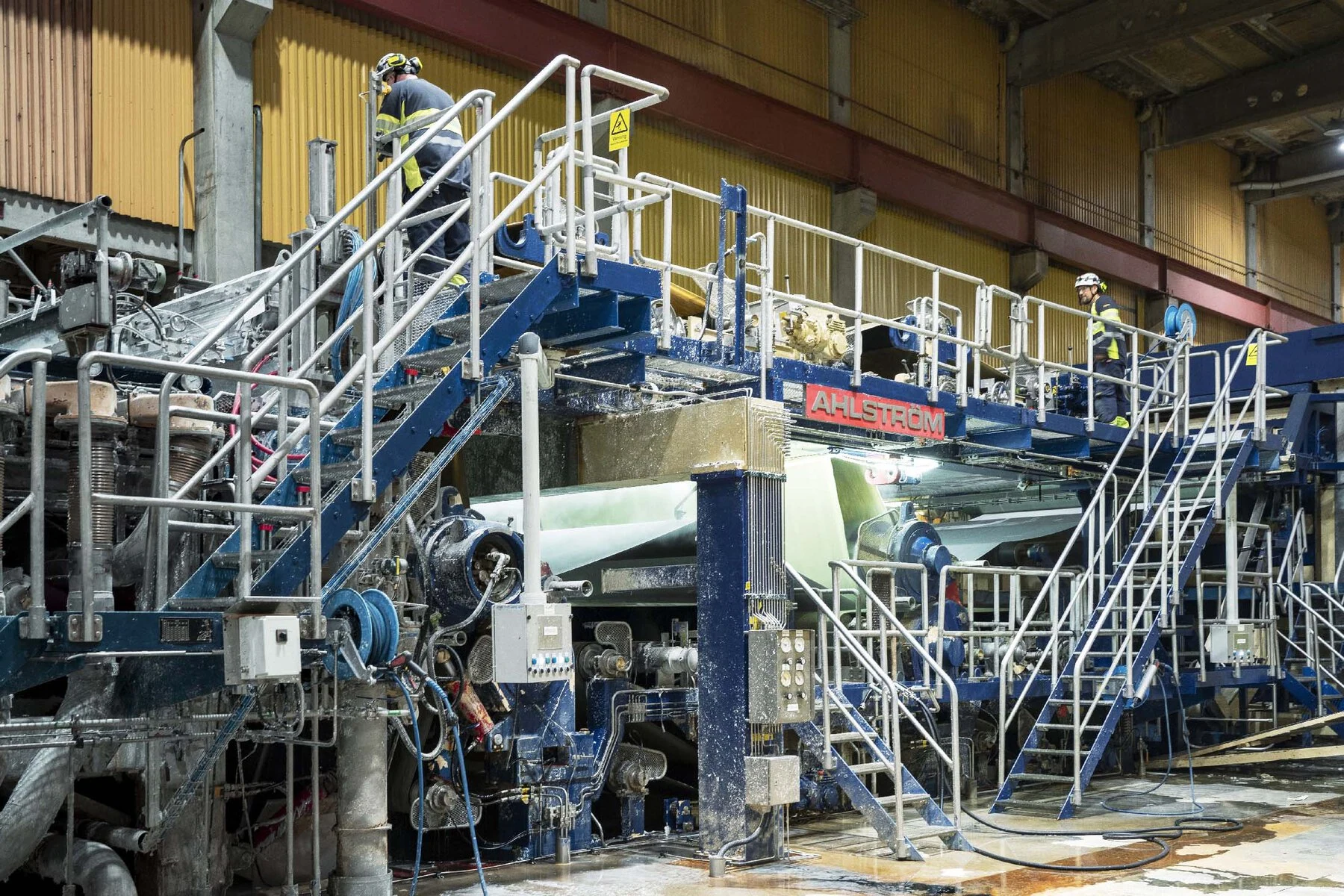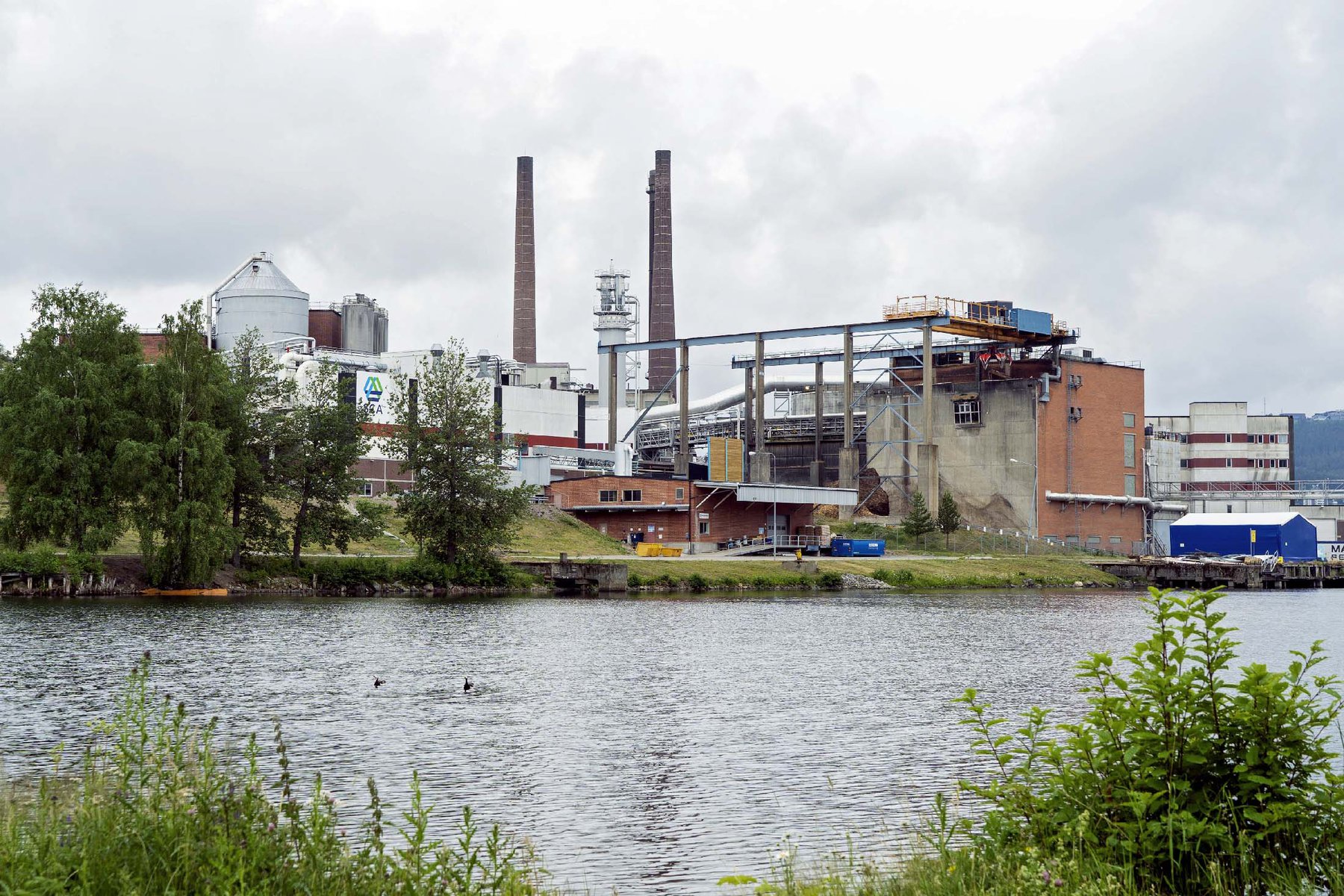The towers of old clothes reach almost to the ceiling of the 200,000-square-foot hall. Forklifts rumble across the concrete floor, squeezing between the stacked bales of jeans, jackets, sweaters and shirts.
In this distribution warehouse in the port of Sundsvall, about four hours’ drive from Stockholm, a quiet revolution in recycling is unfolding. At its nearby plant, the Swedish company Circulose processes old textiles and fabric to produce a material that can be used to manufacture brand new clothing — a new frontier for the fashion industry.
To produce the material, which is also called Circulose, machines the size of a house shred old clothes in a former paper factory. The shreds are further broken down and bleached using chlorine and ozone. A lye solution dissolves zippers and buttons, and the plastic content of the raw material is removed. Other machines then press and dry the pulp into mats, which can be spun into fibers for the production of new textiles, and voila! A new jacket, blouse or pair of pants can be produced.
Some 60,000 tons of textile pulp can be produced in Sundsvall every year, enough for around 150 million new t-shirts. According to Circulose, no other company produces such material at scale from 100 percent textile waste using a closed-loop, chemical recycling process.
The industry urgently needs this. In the last 20 years, the global production of textile fibers has almost doubled to 120 million tons annually. Experts predict an increase to 160 million tons by 2030. Much of it ends up in the trash after only a few uses, as fast-fashion churns out clothes so cheap they hardly seem worth washing.
In the European Union, over five million tons of textiles were tossed last year — 26 pounds per person. The average American is responsible for nearly three times as much — about 70 pounds per person per year, only 15 percent of which is resold or recycled. The remaining 85 percent is discarded in landfills or incinerated. These figures are from 2018 and have likely risen since then.
The consequences for the climate and environment are enormous. From the Chilean Atacama Desert to the beaches outside the Ghanaian capital of Accra, mountains of textile waste reach toward the sky, growing higher every year.

According to estimates by the European Environment Agency, the fashion industry is responsible for 10 percent of global greenhouse gas emissions. The production of textiles consumes huge amounts of water, cotton, wood, fertilizer and petroleum-based plastics, and contributes to deforestation and agricultural waste.
Yet textile recycling has largely been limited to turning old clothes into simple products like cleaning cloths or upholstery fillings, not new high-quality clothes. “People have been asleep for a long time when it comes to textile recycling,” says Sabrina Mauter, a scientist at the Niederrhein University of Applied Sciences Textile and Clothing Technology. But the industry is starting to wake up. The university is working with start-ups and established companies on innovative processes for recycling textiles into new high-quality clothing.
Weighed down by negative news?
Our smart, bright, weekly newsletter is the uplift you’ve been looking for.Its research helped launch the startup Eeden, which uses chemical recycling to break down polyester into its basic components and obtain cellulose from cotton wool. A pilot plant is planned for 2025. In Braunschweig, in northern Germany, the established recycling specialist Rittec has developed its own method for removing polyester from blended fabrics. And the French company Carbios is involved in the fiber-to-fiber recycling of polyester using enzymes. (It’s no coincidence that many processes deal with polyester –– at 55 million tons per year, it is now the main raw material in textile production, more than twice as common as cotton.)
There are basically two processes for recycling textiles: mechanical and chemical. Mechanical separation can work, but the process damages and shortens textile fibers. After being recycled two or three times, the fibers “are so short that they can no longer be reused for the production of textiles,” says Sabrina Mauter. Chemical processes break down the raw materials into their basic components, such as monomers and polymers, allowing them to be recycled again and again.

Start-ups are sprouting across Europe, like the Dutch company Circularity, whose recycled t-shirts are worn by police in Berlin and employees of a large mobile phone provider in the Netherlands. But the big players in the textile and chemical industry are getting involved, too. At the beginning of 2024, the German company BASF teamed up with fashion giant Inditex to introduce a nylon material recycled from textile waste. Since then, Inditex subsidiary Zara has been selling a jacket made entirely from this material.
H&M has also announced that it will start selling reused textiles. Its subsidiary Syre plans to start producing fibers from recycled polyester using enzymes. “We opted for this process because of its simplicity and efficiency,” explains spokesperson Emma Stjernlöf. The process produces up to 85 percent less CO2 compared with the production of new polyester.
Syre plans to put a pilot plant into operation in North Carolina this year. In 2027, two plants with a capacity of 250,000 tons each are to be built near large textile production centers in Vietnam and Spain.
Which of these recycling processes will emerge as the gold standard? “It’s impossible to say, as there won’t be one process that can be applied to all textiles,” says André Lehmann from the Fraunhofer Institute for Applied Polymer Research (IAP). And there are challenges. The smallest impurities, like metals in dyes, can disrupt the polymerization process. Lehmann also says that the various mixed fabrics, dyes and materials in the production of textiles makes recycling difficult, but the industry is working on it.
The example of Circulose, formerly known as Renewcell, shows that a functioning process does not automatically lead to success. The Swedes spent almost ten years developing their process at the Royal Institute of Technology in Stockholm before a pilot plant was put into operation in 2019 and the large factory opened in Sundsvall three years later. The company’s customers and partners included major players in the industry, such as Zara, Massimo Dutti, Levi’s and H&M, who were also the most important shareholders in the company. However, the capacity of 60,000 tons of pulp was never reached. In 2023, Renewcell produced 18,000 tons of material, and in January 2024, only 174 tons. It filed for insolvency in February. In June, the Swedish investor Altor purchased the remaining assets and assumed ownership.
These struggles stem from a range of challenges. The material from Circulose is more than one-third more expensive than other raw materials used in textile production, such as cotton, polyester or cellulose. And many global manufacturers remain hesitant to add recycled textiles to their production lines, instead waiting to see whether they’ll be required to do so by law.
And even textiles made from recycled materials eventually end up in the bin. “It would be much more important to improve the durability and service life of clothing and to ensure that it can be reused and repaired,” says Clara Löw, circular economy expert at the Öko-Institut in Freiburg. Only then should the focus be on improved recyclability. First and foremost, the textile industry needs to produce more sustainable clothing –– and less of it.





